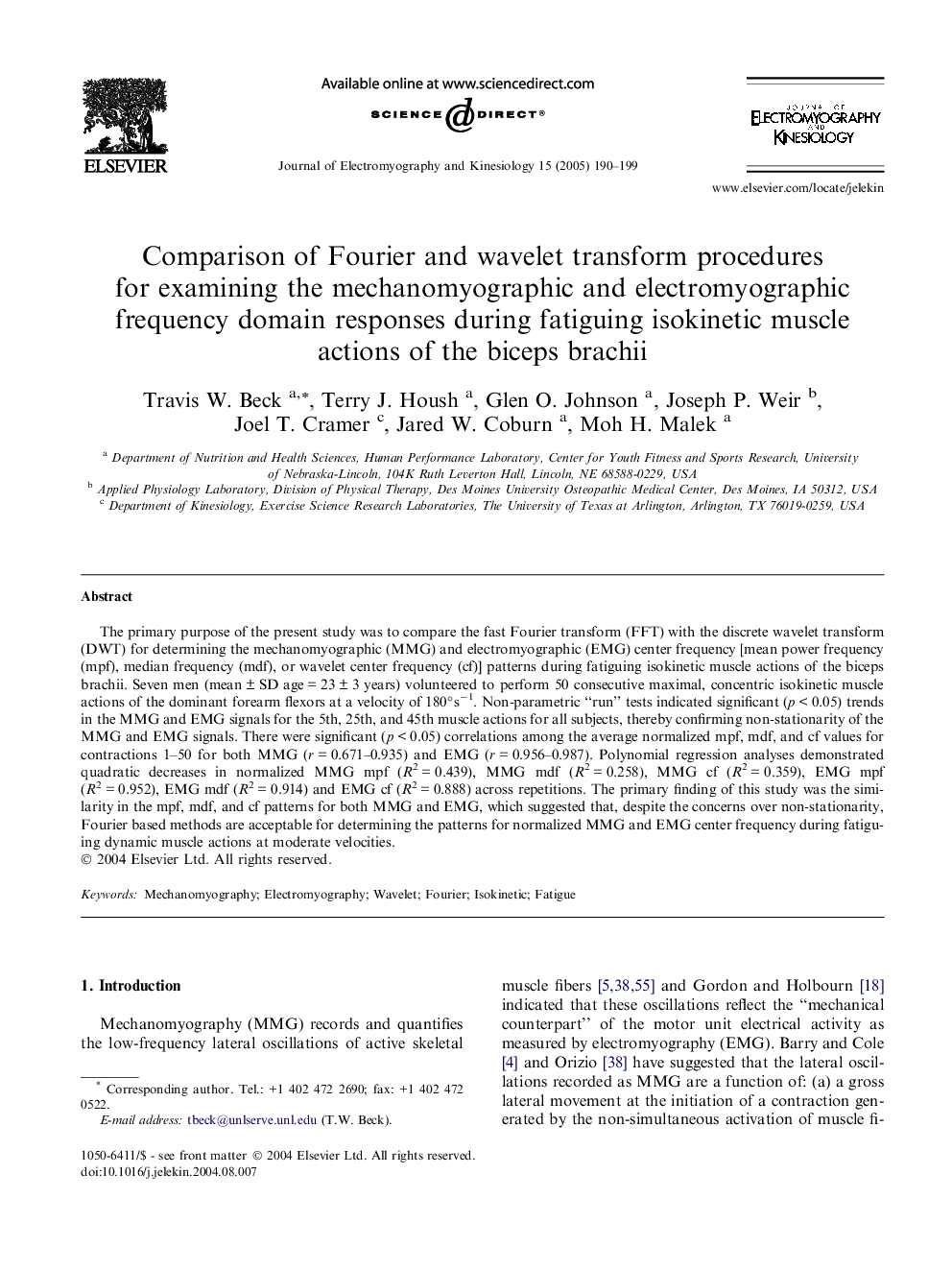| Article ID | Journal | Published Year | Pages | File Type |
|---|---|---|---|---|
| 9353609 | Journal of Electromyography and Kinesiology | 2005 | 10 Pages |
Abstract
The primary purpose of the present study was to compare the fast Fourier transform (FFT) with the discrete wavelet transform (DWT) for determining the mechanomyographic (MMG) and electromyographic (EMG) center frequency [mean power frequency (mpf), median frequency (mdf), or wavelet center frequency (cf)] patterns during fatiguing isokinetic muscle actions of the biceps brachii. Seven men (mean ± SD age = 23 ± 3 years) volunteered to perform 50 consecutive maximal, concentric isokinetic muscle actions of the dominant forearm flexors at a velocity of 180° sâ1. Non-parametric “run” tests indicated significant (p < 0.05) trends in the MMG and EMG signals for the 5th, 25th, and 45th muscle actions for all subjects, thereby confirming non-stationarity of the MMG and EMG signals. There were significant (p < 0.05) correlations among the average normalized mpf, mdf, and cf values for contractions 1-50 for both MMG (r = 0.671-0.935) and EMG (r = 0.956-0.987). Polynomial regression analyses demonstrated quadratic decreases in normalized MMG mpf (R2 = 0.439), MMG mdf (R2 = 0.258), MMG cf (R2 = 0.359), EMG mpf (R2 = 0.952), EMG mdf (R2 = 0.914) and EMG cf (R2 = 0.888) across repetitions. The primary finding of this study was the similarity in the mpf, mdf, and cf patterns for both MMG and EMG, which suggested that, despite the concerns over non-stationarity, Fourier based methods are acceptable for determining the patterns for normalized MMG and EMG center frequency during fatiguing dynamic muscle actions at moderate velocities.
Related Topics
Health Sciences
Medicine and Dentistry
Orthopedics, Sports Medicine and Rehabilitation
Authors
Travis W. Beck, Terry J. Housh, Glen O. Johnson, Joseph P. Weir, Joel T. Cramer, Jared W. Coburn, Moh H. Malek,
